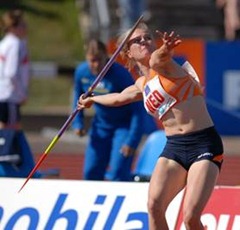Last post on this.
Find a trajectory calculation for any object that includes mass. There isn't one because weight and weight distribution are not important for trajectory.
Jeremy
Let's take a closer look at the trajectory of a bullet example. Consider a rifle with a 0" sight height, a 1 yard zero, shooting 150 gr berger match flat base at 3000 fps, G1 bc of 0.398. This bullet is fired perfectly flat, and it takes 1.647 seconds to make it to 1000 yards and drops 390.7" (all according to jbm). The drop of this bullet in a vacuum would be:
drop = 1/2 * g * t^2 = 0.5 * (32.8 ft/s^2)*(12 in/ft)*(1.647 s)^2 = 533.8" which is no where close to what jbm predicts. Clearly, there's more to the story than just the time of flight and gravity.
There are at least two additional forces, lift and drag that play a significant role in this problem, and it turns out both of those forces are functions of the objects shape, and thus included in the ballistic coefficient, which you mentioned.
The ballistic coefficient is a simplified way to account for the lift and drag (and all other aerodynamic characteristics) a given shape will produce relative to a known, standard shape who's precise aerodynamic characteristics are known. You may recognize a couple of these shapes, G1 and G7, and the different b.c. numbers the same object will have relative to each of those standards. Also included in ballistic coefficient is mass, here's an excerpt from Kestrel's website: "
For the more technically minded, ballistic coefficients are derived from the mass of the object divided by its diameter in the airflow squared, divided by the form factor, i, that relates to the aerodymanics of it's shape. " By including the mass and the shape, the ballistic coefficient by default also takes into account the center of pressure and the center of gravity, which are simply functions of the shape (COP) and the mass distribution (COG) of the projectile.
Because of the standardized shapes required to achieve the same bc, the relationship between the COP and the COG (ie the foc) is essentially identical between similarly constructed bullets with identical BC's. If you change the bc, you change the relationship between the COP and the COG (i.e. the shape of a bullet) the drop changes, even for the same time of flight. One of the reasons for this difference is because of the difference between the COP and the COG, although there are other more significant factors, namely the lift and drag characteristics of the bullet.
For example, lets now consider another bullet in flight for 1.647 seconds: a 270 cal berger 150 gr vld at 2960 fps. again with 0" sight height and a 1 yard zero (level bullet flight), the drop at 1100 yards and 1.647 seconds is 412", which is different once again than how the bullet would free fall in a vacuum. The difference? The shape, which determines the lift, the drag, the center of pressure, and the center of gravity for that particular bullet. This 270 cal bullet produces less drag and less lift, so it travels further, despite starting slower, and falls more than the initial 30 cal example in the same amount of time.
The takeaway here is that bullet shape, which also determines the center of gravity and the center of pressure, has a direct impact on the trajectory of the bullet.
Lift always acts through the center of pressure, just like gravity always acts through the center of mass. If you increase the separation between these points, you increase the moment because the force * distance becomes larger. This increased moment tends to make the arrow tip down more in flight, absent another moment to cancel it out. Again, this is super apparent with a javelin because it's big and slow enough to see, watch a javelin be thrown you can very clearly see it tip over in flight.
It is admittedly less of a factor with an arrow, especially at useful ranges and with fletching, which applies some moment to counteract the tip weight due to the air resistance on the side profile of the fletching as the tip tries to pivot down. As I mentioned earlier, it is at least theoretically possible, albeit likely impractical, to use enough fletching to achieve perfectly level arrow flight, and thus maximize the distance an arrow could travel when fired from a bow. I will not be performing that experiment.

